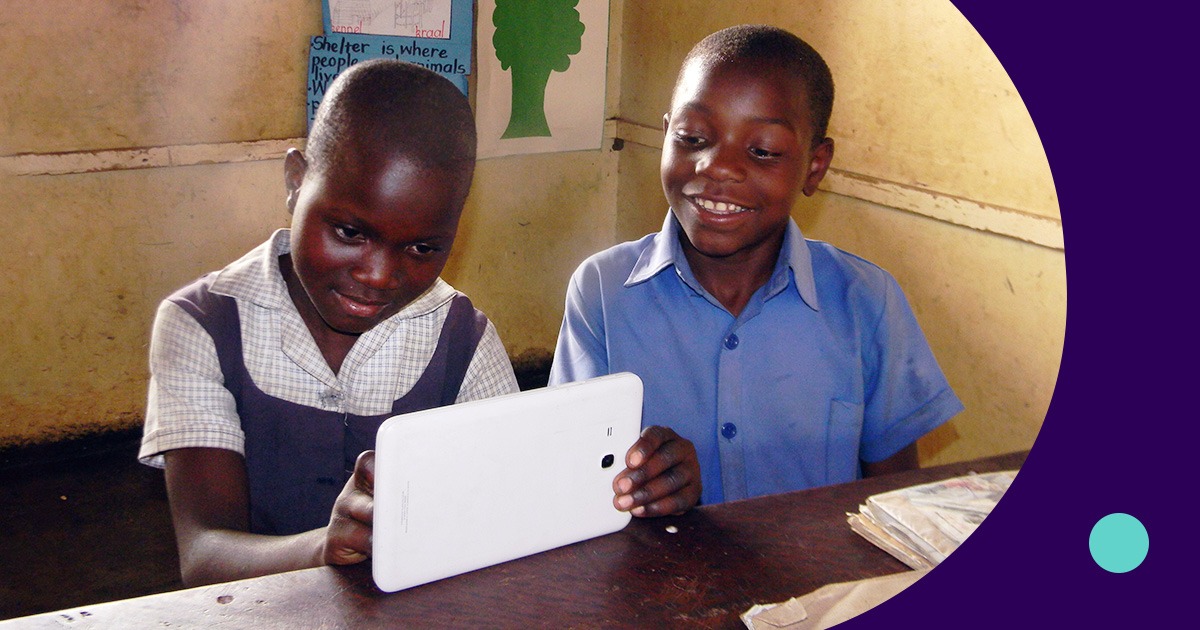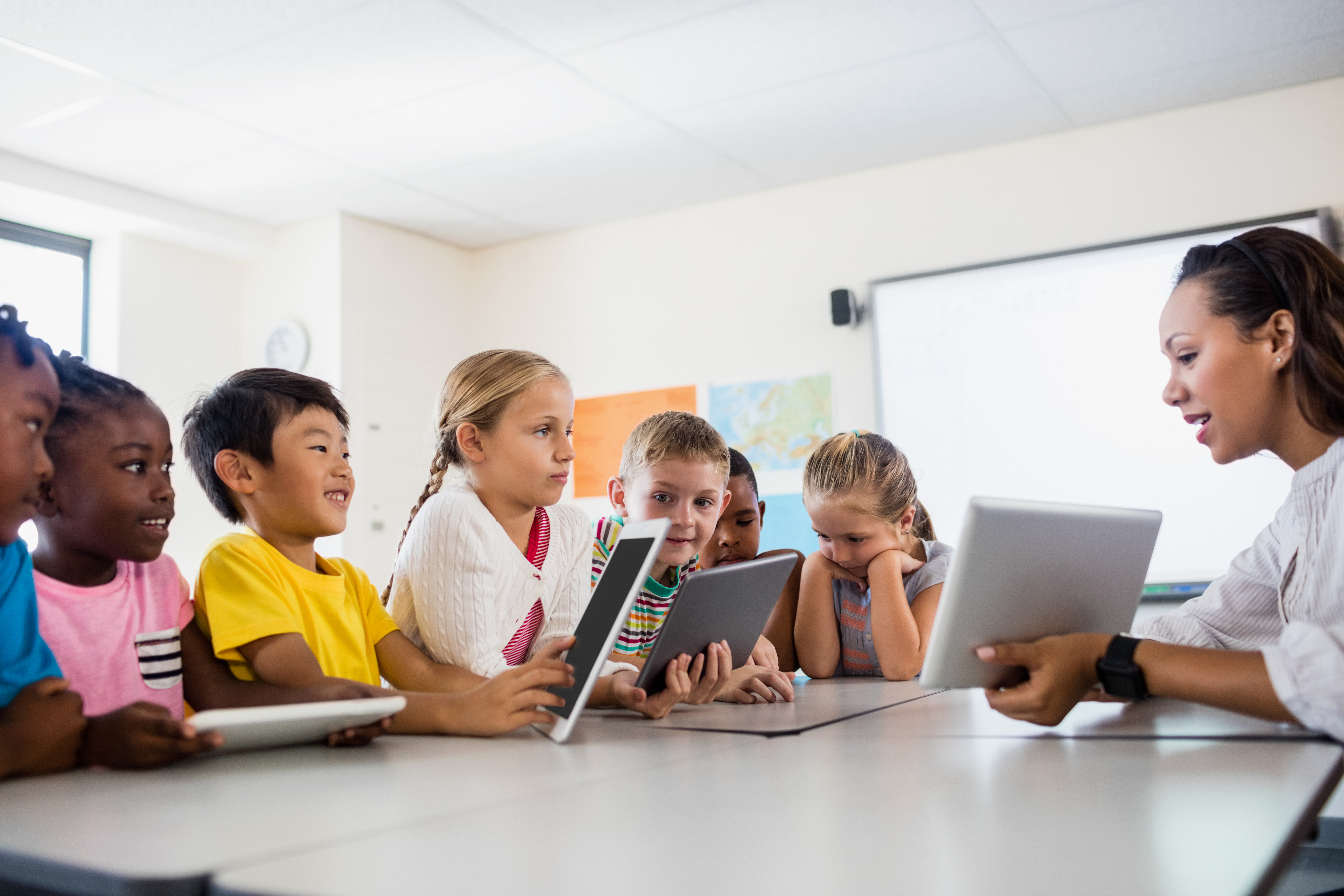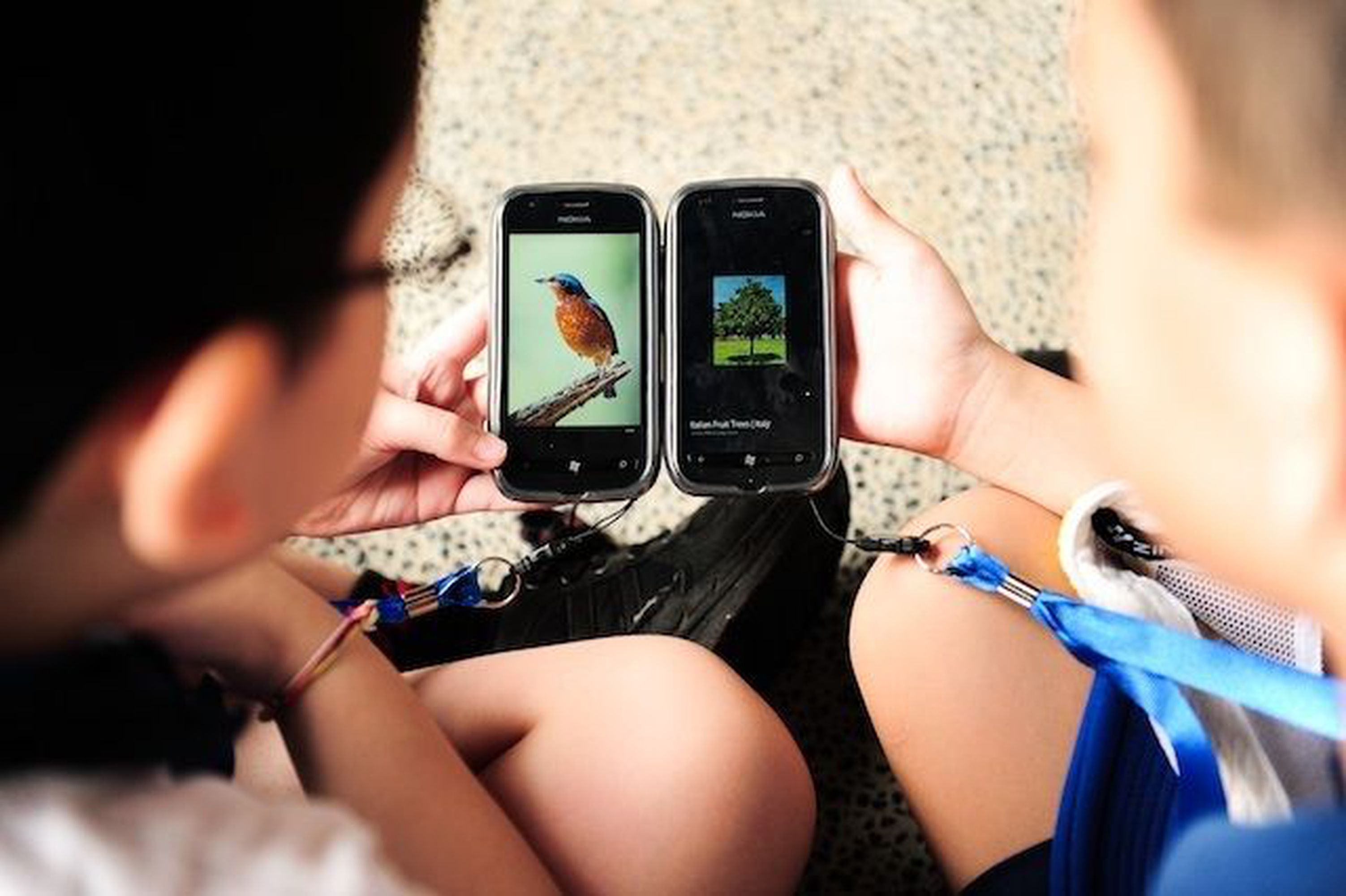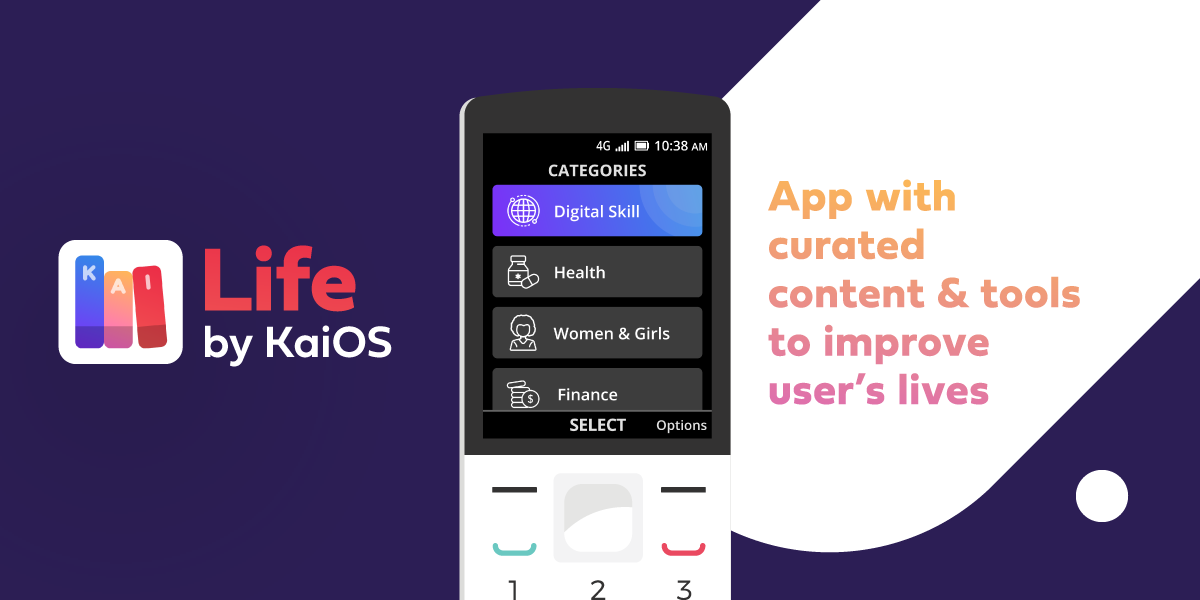
We accept when older generations struggle with technology, but young students and professionals don’t get the same level of understanding. In the 21st century, all young people in developed countries are expected to have at least a basic level of digital literacy.
However, high costs often prevent students in low-income areas or developing countries from gaining access to technology in the classroom and at home. In order to prevent achievement gaps in the future, it’s crucial to make affordable devices and internet available to young students.
The benefits of using technology in early-education classrooms
Technology now plays a vital role in everything from building fine motor skills to cementing future career prospects. When young students use technology at school, it leads to a variety of benefits.
Improved basic foundational skills

Computers and phones require different motor skills than pen and paper. Learning how to move a computer mouse so that it interacts with content on a screen helps children develop hand-eye coordination. Plus, working with touchscreens or small phone screens allows kids to develop fine motor skills differently than they would by gripping a pencil and writing in a notebook.
Children’s social development benefits from technology as well. Because many early-education games encourage teamwork, young students build important social skills as they work together to complete tasks within the game.
Technology has also been shown to boost student engagement and lead to improved cognitive scores. A study of 10 countries in Latin America, for example, found that adding a single data projector to each classroom lead to an increase in Program for International Student Assessment (PISA) science scores.
Increased subject-matter comprehension
Technology in the classroom encourages students to creatively engage with the subject matter, which leads to better comprehension. A variety of tech options can be integrated into educational settings, including SMART boards, digital data projectors, laptops, tablets, and even mobile phones.

Virtual field trips are one way teachers are using technology to engage kids. With the help of virtual reality headsets or simple tablets, students can explore past and present destinations. What better way to get kids excited about ancient China than to let them take a virtual tour of it?
Additionally, young students in underserved areas in India are showing great improvements in literacy, thanks to mobile phones. Schoolchildren between 5 and 8 use mobile phones to access the Play ‘n’ Learn program, which helps them learn how to use digital devices while they work on language comprehension.
Better opportunities in the future
Digital literacy becomes increasingly important in more advanced grades. If students do not build their technology skills early on, they often fall behind in school and in the job market.
In the United States, school standards require that sixth-graders be able to “use technology, including the Internet, to produce and publish writing.” If children are not exposed to technology in their early-education classrooms, students will be at a severe disadvantage when they enter secondary schools.
Students’ higher-education prospects can also be limited if they don’t have the necessary skills. For conflict-affected youth, online learning is often their only option. The Hakeem chatbot aims to help these youth find online education opportunities, but it assumes that students will have a basic understanding of technology.
Without exposure to technology during their formative years, students can experience significant career disadvantages as well Young people in Egypt, for instance, are already suffering the consequences. Though most schools do not integrate technology into their lessons, many jobs require at least basic tech skills. The skills gap has led to a generation of young people who are struggling to meet the prerequisites of jobs in the private sector.
Affordable technology is already affecting early-education positively
Early access to technology can be life-changing, but it’s typically prohibited by the cost. Affordable technology makes lifelong changes possible for children in developing countries and low-income schools. The following examples show how access to technology is opening up new learning opportunities for young students.
Google Chromebooks for Education
Google’s lightweight, stripped-down laptops provide internet access and enriching educational apps to students at a much lower cost than traditional laptops.
On average, Google Chromebooks for Education cost 60% less than other laptops with similar functionalities.
Smartphones for students without home internet access
While many students in the United States rely on home computers and internet access for everything from research projects to helpful secondary sources, low-income students do not have the same advantage.
Qualcomm’s Project K-Nect distributed smartphones to ninth-grade students who did not have internet access at home. Throughout the school year, the students relied on the smartphones to access additional educational resources and collaborate with their peers. As a result, the students raised their school test scores by 30%.

Smart feature phones running on KaiOS
An affordable solution in one area may be completely unrealistic in another. In developed countries, low-income schools and families may still be able to afford a few laptops or smartphones. But in emerging countries, those same devices are far too expensive.
One solution is smart feature phones. The non-touch devices are sold for far less than touchscreen smartphones. In fact, smart feature phones running KaiOS are available for as little as $17. The devices run on limited memory, which allows us to keep the costs low. At the same time, we also partner with various carriers and manufacturers to ensure that valuable content and affordable data plans are available through smart feature phones running KaiOS.
With the help of mobile internet and web-based applications, smart feature phones can give students access to research materials and educational games.
As of 2019, KaiOS is already running on over 100 million phones worldwide.
KaiOS makes technology and educational materials accessible

Thanks to the low price of KaiOS-enabled smart feature phones, millions of people — including students — in developing countries are getting connected to the internet for the first time. To help newly connected users make the most of their devices, we created the Life app.
The Life app is currently available for download via the KaiStore in select African countries and will soon expand to more countries in Africa and Asia, where it can reach many first-time internet users. The app comes pre-loaded with a comprehensive directory of resources in categories such as health, women’s empowerment, agriculture, financial inclusion, digital literacy, and education.
While the app has materials for every age group, we’re especially proud of the free educational resources for young students, including the following:
- Books
- Literacy-building tools
- Lessons and resources for educators
In addition to the educational materials, the Life app also has resources that help young students build their digital literacy skills. Children who are exposed to technology before the age of 6 have been shown to perform better in school later in life than children whose first experience with digital devices was after the age of 13.
And because children are often able to master digital devices faster than first-time adult users, the Life app makes it easy for kids to teach their parents how to use them, too. Programs in the US and the UK have already shown that tech-savvy youth often make the best teachers for older first-time technology users.
Affordable technology is necessary for educational equality
Making technology and internet access affordable in early-education classrooms and at home is key to bridging the digital divide. If children establish digital literacy skills during early childhood, they are better prepared for more advanced grades and entrance to the workforce.
We are passionate about making smart feature phones and mobile internet access affordable for people in underserved markets. If you would like to submit ideas or content for the Life app, please fill out our submission form to get in touch with Axel Meta, our Life app project owner.
Comments